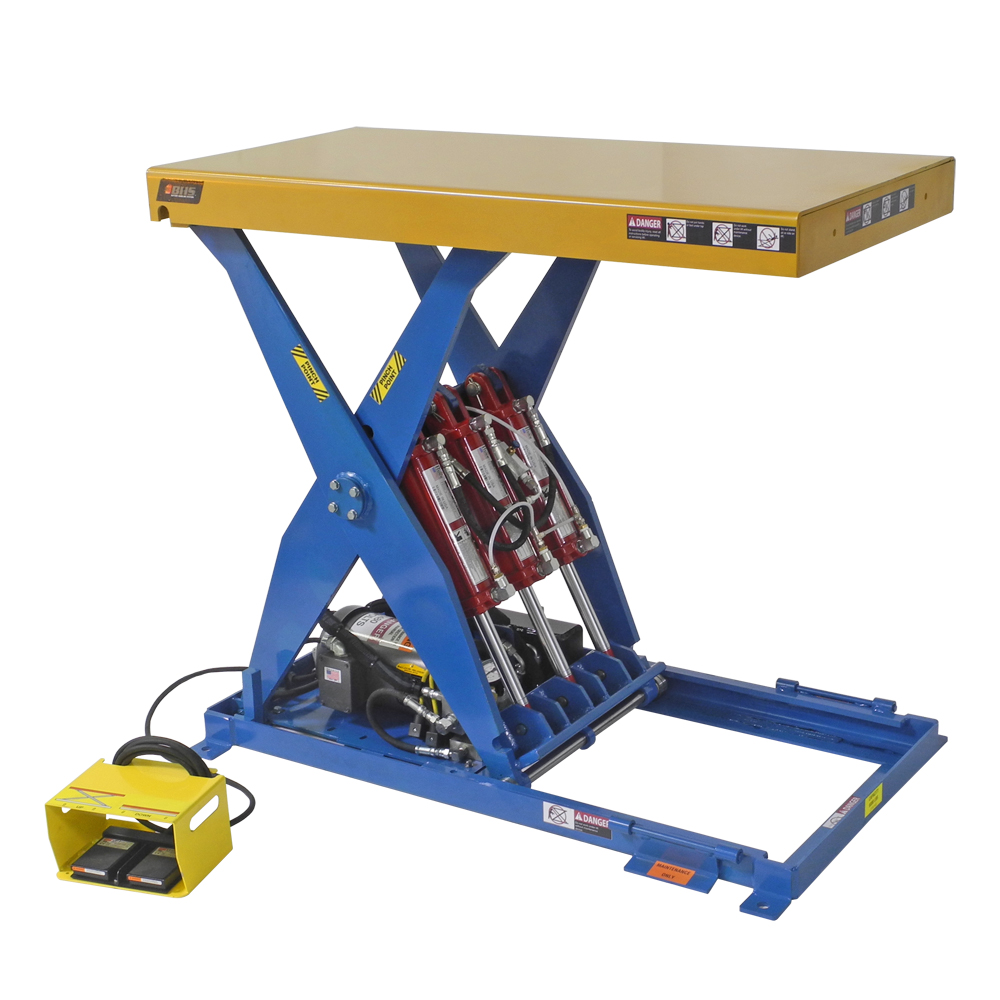We use cookies to make your experience better. To comply with the new e-Privacy directive, we need to ask for your consent to set the cookies. Learn more.
Reducing Muscle Strain (and Injuries) During Material Handling
As warehouses and factories improve their material handling infrastructure, health and safety practices are changing for the better. Facilities have a clear interest in keeping their workers comfortable and safe — after all, injuries don’t benefit anyone, and they certainly don’t help productivity or staff turnover.
Of course, there’s still room for improvement. One paper in the journal Ergonomics reports that up to 27 percent of injuries to the lower back result from pushing and pulling tasks. The report also notes that “handle height appears to play an important role,” in creating stress on the spine (also noting that pulling and pushing create different levels of stress).
For many operations, there’s a cost-effective solution. Many facilities have converted to adjustable workstations including powered scissor lift tables, which can position loads at an optimal level for each worker. These ergonomic solutions are a welcome change, but as is the case with any safety-oriented innovation, they need to be properly implemented in order to provide benefits.

The key is to match the workspace to the work. Reducing the force required for lateral load movements can be as simple as changing the surface of the work station, and by understanding a few simple principles, managers can choose material handling equipment that will improve efficiency while reducing on-the-job injuries.
Finding an Ergonomic Tabletop for Efficient Material Handling
The first factor to consider is the force required to move the materials. The Canadian Centre for Occupational Health and Safety recommends the following force limits for pushing and pulling tasks:
- Standing, whole body: 50 pounds-force (lbf) (225 Newtons)
- Standing, arm and shoulder: 24 lbf (110 N)
- Kneeling: 42 lbf (188 N)
- Seated: 29 lbf (130 N)
While you can't reduce the weight of materials in most instances, you can reduce the force required for pushing and pulling materials by letting your lift table perform some of the work.
Variable height workstations (such as BHS Scissor Lift Tables and Mobile Lift Tables) are available with a range of tabletop attachments designed to minimize the force required for handling and transferring a variety of loads. You’ll need to choose an appropriate technology for the material handling tasks in question.
Options include:
Ball Transfer
Lift table surfaces provide ergonomic assistance in every direction, creating a versatile work space. The tabletop is studded with rotating ball bearings in fixed positions, reducing the force required to rotate boxes, push items off toward conveyor lines, or pull products onto carts. This surface is ideal for order packing, since it reduces force in all directions and provides wide-ranging assistance with all lateral movements.
Roller Conveyor
Tabletop attachments are ideal for manufacturing settings and assembly lines. The heavy-duty rollers integrate seamlessly with existing factory conveyors, drastically reducing the force required to manually transfer materials. When paired with a mobile lift table, facilities can easily transport goods across facility floors without placing workers at risk.
Turntable
Attachments are ideal for pallet-building and unpacking shipments. By preventing workers from leaning over tables, these rotating surfaces provide protection from risky repetitive motions. A powered scissor lift table with a rotating workspace is the industry standard for ergonomic pallet-building stations.
If you’re not sure of the ergonomic risks of the loads in your facility, start by consulting the National Institute for Occupational Safety and Health Hazard Evaluation Checklist for Lifting, Carrying, Pushing, or Pulling. If you check “yes” on many of the items on this list, consider installing workstation tabletops designed to reduce the force of moving loads.
Now that most facility managers recognize the value of reducing lift requirements for staff, it’s time to implement the next generation of ergonomic improvements. Reducing push/pull force to safe levels is a great way to keep staff safe — while simultaneously enhancing productivity and improving worker comfort.
References:
"DHHS (NIOSH) Publication No. 2007-131: Ergonomic Guidelines for Manual Material Handling." National Institute for Occupational Safety and Health. 2007. PDF. 18 June 2015.
Knapik, Gregory G. and Marras, William S.(2009) “Spine loading at different lumbar levels during pushing and pulling." Ergonomics, 52: 1, 60 - 70. 1 Jan. 2009. Web. 18 June 2015.
"OSH Answers Fact Sheets - Pushing and Pulling, General." Government of Canada, Canadian Centre for Occupational Health and Safety. N.p., n.d. Web. 18 June 2015.
